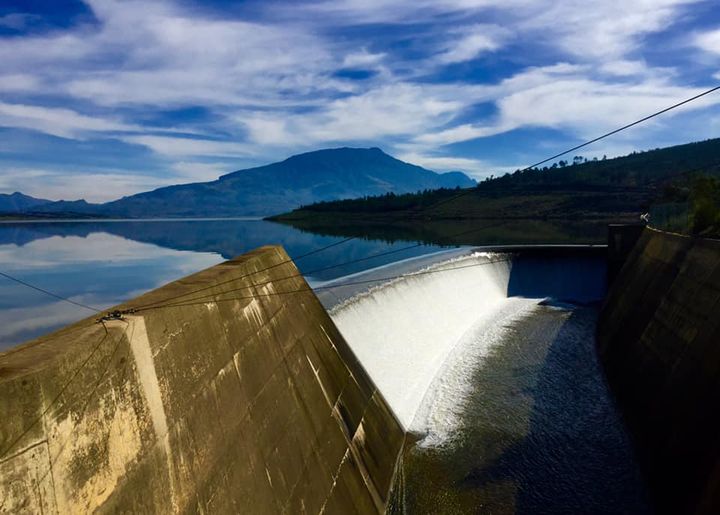Theewaterskloof Dam Facts
Theewaterskloof Dam
Theewaterskloof Dam is the 7th biggest dam in South Africa, the Gariep Dam being the biggest dam. Theewaterskloof dam, completed in 1980, is significant in that it forms part of one of the most imaginative water transfer schemes in South Africa which links the Berg and Sonderend rivers in the Western Cape. The building of the dam was described as ‘one of the most impressive civil engineering projects of the 1980’s”
Theewaterskloof dam was first constructed as the central storage unit for the Riviersonderend -Berg River transfer scheme. The tunnel through the Franschhoek mountain was the second phase and thereafter the construction of the Jonkershoek tunnels.
The Franschhoek tunnel is a reinforced 4,3 m-diameter concrete tunnel, 7,9 km long from Villiersdorp side to the Berg River valley.
The Jonkershoek tunnel system includes a total of 23 km of tunnels. A total of 236 000 m³ of concrete was used. The main Jonkershoek tunnel cuts through the Groot Drakenstein and Jonkershoek mountains for 13 km to surface at the Kleinplaas Dam into the Eerste Rivier in the Jonkershoek valley.
Engineering Features of the Theewaterskloof Dam:
Type: Earthfill
Height above lowest foundation: 37,5m
Gross Storage Capacity: 482 million m³
Crest Length: 646 m
Type of Spillway: Side-channel
Spillway Capacity: 390 m³/s
Area at full supply level: 5 100 ha
Interesting Facts and Figures:
· If all the holes for blasting on the Riviersonderend-Berg River project were to be joined into one continuous hole, it would reach over a distance of roughly 2 300 km
· The 470 000 m³ of concrete cast on the project was only 40% as much as that used to build the Vanderkloof dam.
· Measured in 50 kg pockets, 3,4 million pockets of cement went into the various constructions on the project.
· If all the soil and rock excavated were to be placed on an area the size of a rugby filed, the dump would be 12 storeys high.
· One and a half million kilograms of dynamite was used for blasting on the project.
Source: DWS, ‘Blood, Sweat and Tears at Riviersonderend’ compiled by Lani van Vuuren
- Last updated on .
 Theewaterskloof Dam
Theewaterskloof Dam